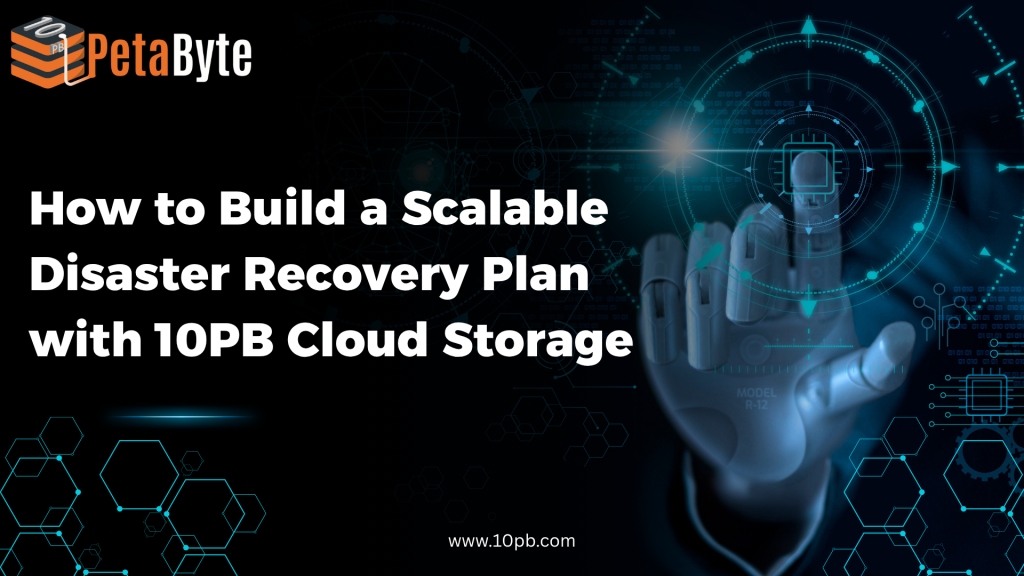In a time when data is the lifeblood of all successful organizations, protecting that data from outages is paramount. A scalable disaster recovery plan that can be scaled is your safety net — it reassures you that you can bounce back quickly after any eventuality. As data continues to grow at huge paces, utilising 10PB cloud storage is one of the most solid methods to ensure you have a resilient and future-proofed recovery strategy in place. Let’s dive into the specifics on how to establish a scalable plan that protects your business well into 2025 (and beyond).
The Importance of Scalability in Disaster Recovery
Your disaster recovery plan should evolve as your business scales. And what defends your company now, as your data grows, might not be sufficient. Scalable DR: As you grow, scalable disaster recovery plan makes it easy to expand capacity and capabilities without having to rewrite policies or buy new hardware. This is where 10PB cloud storage comes into its own.
Keep your backups and archives in the cloud, easily expanding your storage without worrying about hardware, floorspace, electricity, HVAC, or maintenance. And, of course, with cloud solutions, you have the added benefit of built-in geographic redundancy and encryption, making them the perfect component of a scalable disaster recovery plan.
Benefits of Using 10PB Cloud Storage for Disaster Recovery
✅ Unlimited Expansion
With up to 10 petabytes of capacity at your fingertips, cloud-based storage can grow with your business. This scalability eliminates the need to manage bulky tape drives or on-site servers.
✅ Rapid Recovery
When a disaster strikes — whether due to cyberattacks, hardware failure, or natural disasters — a scalable disaster recovery plan leveraging cloud storage enables near-instant data restoration, allowing you to resume operations faster.
✅ Cost Efficiency
Compared to traditional hardware setups, leveraging 10PB cloud storage eliminates capital expenditures. You pay only for the data you use and can scale up or down anytime.
✅ Enhanced Security
Leading cloud providers offer built-in encryption, access controls, and compliance features, so you can trust that your data is protected in transit and at rest.
✅ Automation and Versioning
Cloud disaster recovery solutions often support automatic backups and data versioning. This makes it easier to recover not just from disasters, but also from accidental data loss or ransomware attacks.
Building Your Scalable Disaster Recovery Plan Step-by-Step
- Assess Your Risks and Data Priorities
Identify which data is most critical to your operations. Prioritize data sets that must be restored quickly to maintain business continuity.
- Choose a Cloud Provider
Look for a cloud partner with proven expertise in enterprise-level scalability and security. Verify they offer 10PB cloud storage options with seamless expansion as your company grows.
- Develop RTO and RPO Goals
Your Recovery Time Objective (RTO) and Recovery Point Objective (RPO) will guide the recovery plan. Faster recovery goals may require more frequent backups, snapshots, or even active-active configurations.
- Implement Automated Backups
Set up automated, versioned backups into the cloud. This ensures your data is continuously protected without manual intervention.
- Test Regularly
Disaster recovery is only effective if it’s tested. Schedule regular drills to verify you can meet your RTOs and RPOs under real-world conditions — and scale capacity as you grow.
Real-Life Use Cases for Scalable Disaster Recovery
Retail Chains:
Large retail businesses use 10PB cloud storage to back up point-of-sale data across multiple locations. Cloud scalability lets them add new stores without disrupting existing recovery processes.
Healthcare Providers:
Healthcare organizations with strict compliance requirements implement cloud-based recovery plans to scale data retention and meet HIPAA requirements for millions of patient records.
Media Companies:
Media production houses need to protect massive video files. Cloud scalability ensures they never run out of capacity, and can quickly retrieve archived content in case of system failure.
Conclusion
A scalable disaster recovery plan is vital for any modern business looking to thrive in a data-driven future. By leveraging the power of 10PB cloud storage, you can protect your assets, reduce downtime, and scale with confidence — all without worrying about hardware investments or data limits. Ready to take the next step? Invest in a flexible recovery plan today and safeguard your business for 2025 and beyond.
💡 Frequently Asked Questions (FAQ)
Q1. What is 10PB cloud storage?
10 PBs of cloud storage means an incredibly large, highly scalable data capacity in the cloud — as large as 10 petabytes — allowing businesses to store, manage, and back up vast amounts of data without thinking about hardware.
Q2. What is the importance of scalability in disaster recovery?
Scalability is important because it means your scalable disaster recovery plan can scale with your business and you never run out of capacity or need to rip and replace everything as your data needs grow.
Q3. How does cloud storage enhance disaster recovery?
Cloud storage allows for automatic backups, data availability at any time, geographical redundancy and swift recovery, all so businesses can be up and running as soon as possible following an unforeseen occurrence.
Q4. How much does 10PB disaster recovery based on cloud storage?
The price varies depending on the provider and which features you require. But cloud storage solutions are usually cheaper than on-premise storage simply because you only pay for exactly how much you use.
Q5. Is a scalable DR plan possible for small business?
Absolutely. Small businesses can access 10PB cloud storage solutions that grow as they grow – and protect them from data loss without tiering.

